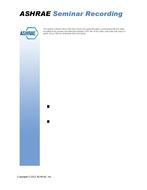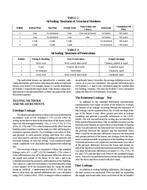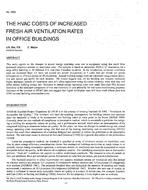Analyses combined heat and mass transfer during the absorption of water vapour into a lithium bromide-water (LiBr-H2O) liquid film and develops a transient modelling method for a rotating absorber. A horizontal cylinder within a cylinder-type heat exchanger was used. While the outer cylinder is held stationary, the inner cylinder is rotated at an appropriate speed to enhance heat and mass transfer during the absorption process. The effects of the length of the cylinder, diameter of the inner cylinder, clearance between the two cylinders and angular velocity on the absorber performance were investigated. The results show that the absorption rate decreased with elapsed time for a given angular velocity. Changing the length had a more significant effect in short cylinders than in long cylinders. The time required to absorb all the initial vapour was strongly affected by the diameter at a low angular velocity. The effect of clearance on the time required to absorb the vapour was more considerable at a narrower clearance than at wider clearance. The optimum angular velocity exists for both thermal and geometric conditions of the rotating absorber.
KEYWORDS: year 1995, heat flow, absorbers, rotating, condensation, absorption, performance, vapours, calculating, cylinders, sizing, designing
Citation: Symposium, ASHRAE Trans. 1995, Vol.101, Part 1, Paper number CH-95-1-1, 525-527
Product Details
- Published:
- 1995
- File Size:
- 1 file , 1.1 MB
- Product Code(s):
- D-17259


